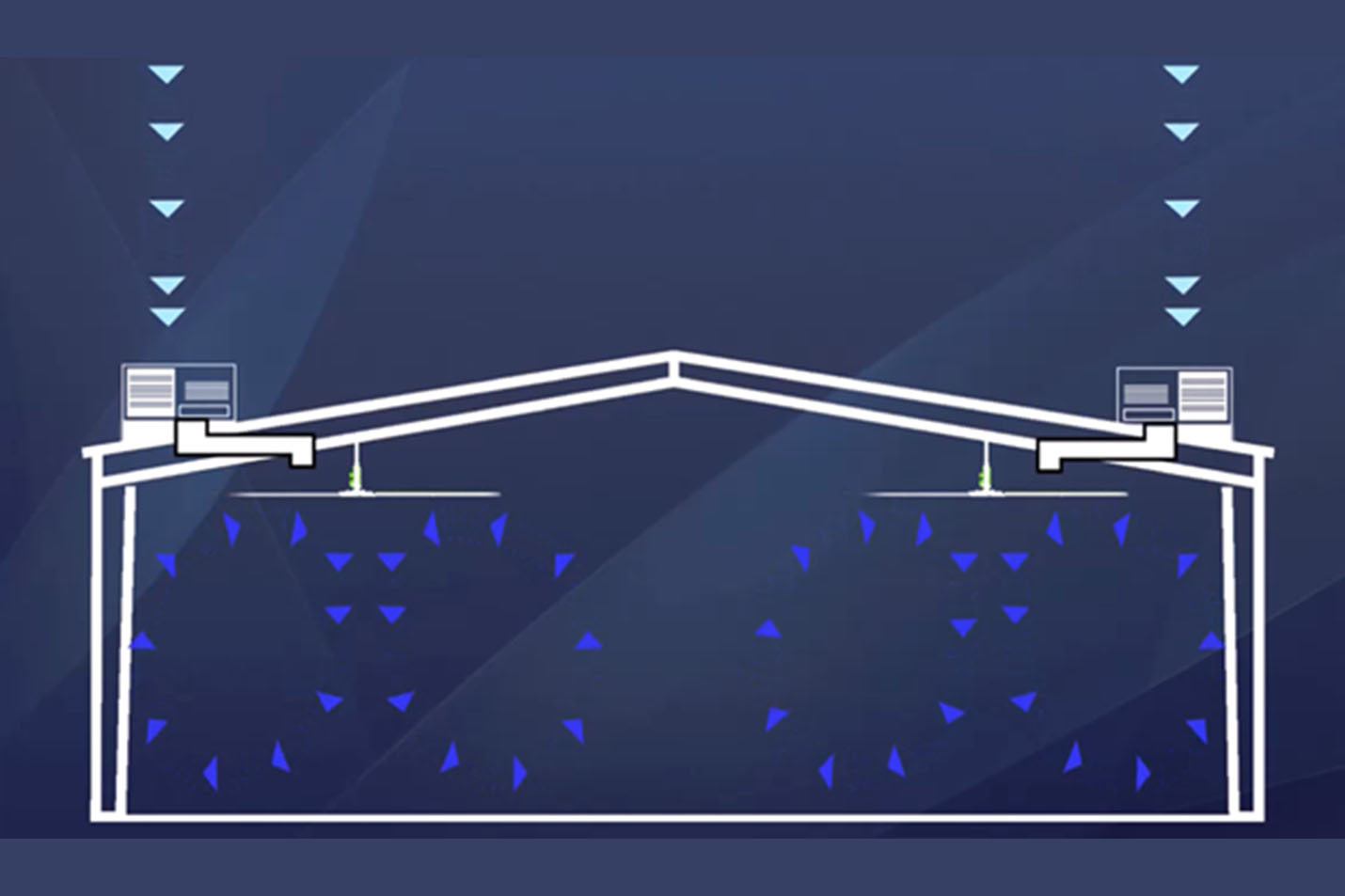
Optimizing HVAC System Efficiency with HVLS Fan Integration
Much like trying to save on your electricity bill, improving building efficiency can be challenging due to the energy consumption of various systems—particularly HVAC equipment. According to sources like Cool Quality Air, HVAC systems account for approximately 40% of a commercial building’s total energy consumption. Reducing this percentage is essential for optimizing overall energy efficiency.
How Does the Integration of HVLS Fans Improve My HVAC System?
You might wonder, “How could adding another system to my building reduce energy costs?” While it may seem counterintuitive, incorporating HVLS fans into your cooling system can lead to significant energy savings. In fact, research conducted by Envira-North shows that HVLS fans can reduce energy consumption by up to 34%. This improvement is driven by several key factors:
- A reduced number of HVAC units required
- Extended lifespan of HVAC equipment
- Effective design of cooling system
Let’s break down how these benefits are achieved.
Using Fewer HVAC Units
In larger spaces, maintaining consistent temperature often requires multiple HVAC units. However, by integrating HVLS fans, you can diminish the quantity of units needed in two ways:
- 1. Use HVLS fans in place of HVAC units
- 2. Operating HVLS fans alongside HVAC systems to improve efficiency
By using HVLS fans as a support—or in some cases, as a partial substitute—you can reduce the need to use HVAC units that consume lots of energy. Since HVLS fans consume far less power, this method helps lower your overall energy consumption and utility costs.
Extended HVAC Lifespan
Replacing aging HVAC equipment can be a costly endeavor. However, by integrating HVLS fans, building owners can reduce HVAC run time, which directly extends the system's operational lifespan.
With shorter run cycles, HVAC components will endure less wear and tear over time. This not only leads to decreased energy bills but also reduces long-term maintenance and replacement costs—helping you get more value out of your investment.
Creating an Efficient Cooling System Design
To fully maximize efficiency, it’s important to design your cooling system with both HVAC units and HVLS fans working in tandem. Strategic fan placement ensures that conditioned air from the HVAC system is distributed evenly throughout the space. This type of design generates multiple benefits:
- Consistent and comfortable indoor temperatures
- Reduced need for additional HVAC units
- Enhanced productivity
Together, these improvements create a more efficient and cost-effective building environment.
What Does This All Mean?
Incorporating HVLS fan technology not only enhances your HVAC system but also delivers significant savings and performance improvements. It’s a smart way to reduce energy costs, extend equipment life, and maintain optimal comfort in any large-scale facility.
For innovative, reliable solutions, Envira-North offers HVLS fans designed for a wide range of spaces—from warehouses and facilities to agricultural buildings and homes. Explore our products today and reach out to our team to learn more about how HVLS integration can revolutionize your cooling strategy.
Other Articles You May Find Helpful
1. The True Cost of Poor Temperature Control — And How to Fix It - click here.
2. Common Missteps in Designing a Large Facility - click here.
3. What Are the Advantages & Disadvantages of Fans - click here.
